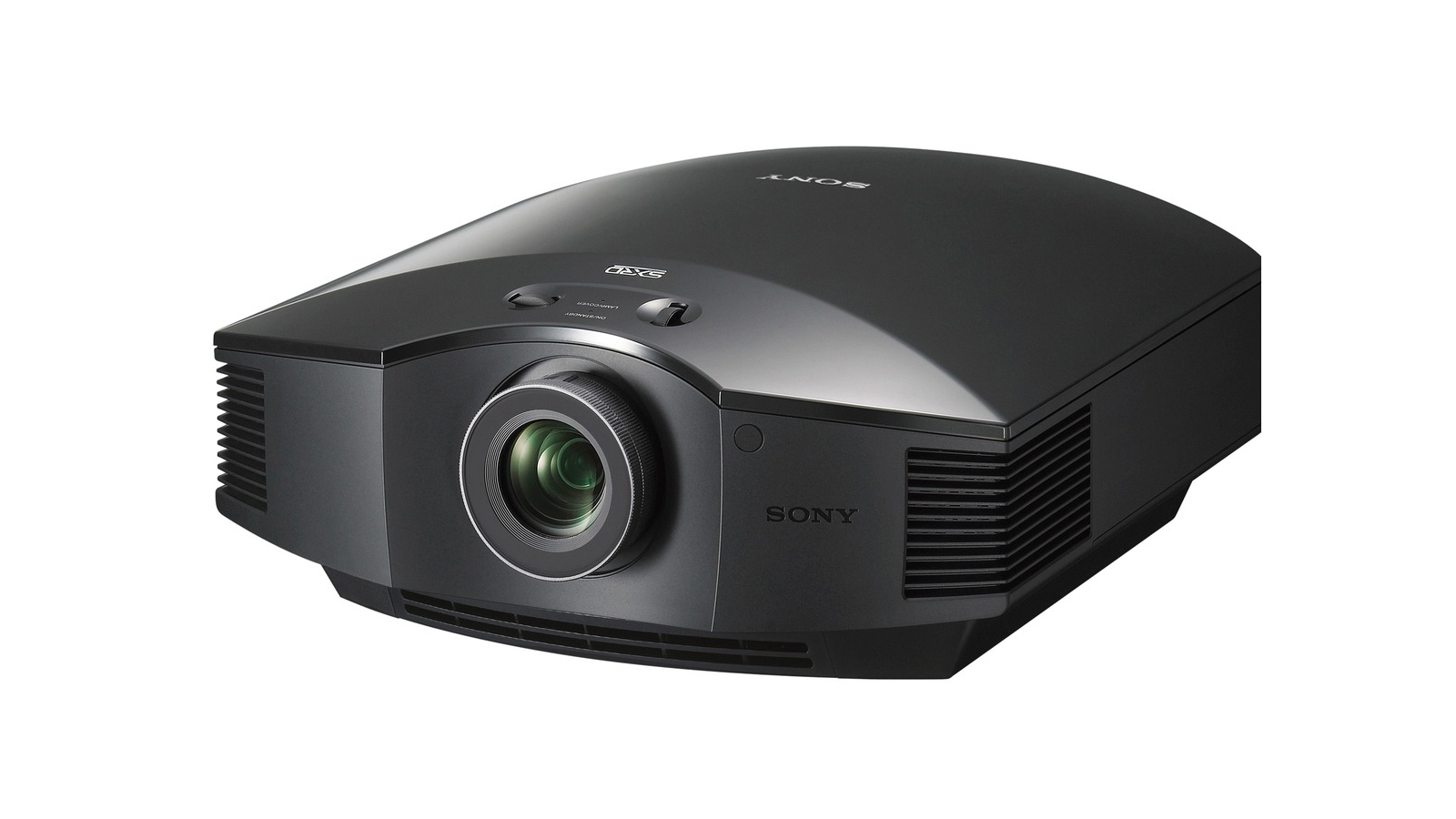TechRadar Verdict
This sensational Sony is a welcome update on a sumptuous 1080p projector design. If you're planning a dedicated cinema room, it's a blockbuster you won't want to miss…
Pros
- +
Cinematic picture performance
- +
Top notch detail processing
- +
Superior motion handling
- +
Relatively quiet
Cons
- -
Too dim for media room use
- -
Needs professional installation
- -
Lack of a 12v trigger is irritating
Why you can trust TechRadar
Sony may have taken an early lead in the UHD projector race, with its trio of 4K flagbearers (the VPL-VW320ES, VPL-VW500ES and VPL-VW520ES), but the company continues to refine its dedicated Full HD offerings too.
A great example of that is the new £1850, $1699, AU$4299 VPL-HW45 – a replacement for the VPL-VH40ES and positioned just below the VPL-HW65ES (which adds a dynamic iris).
Sony's latest bright box has been given a brightness and contrast upgrade, as well as a lamp update. Lamp life is now quoted at 6000 hours in Eco mode, which is significantly better than many rivals, who tend to quote 3000 - 4000 hours usage.
If you're looking for a serious home cinema projector priced at less than a top-end TV, it could well fit the bill.
Design
One thing that hasn't changed with the VPL-HW45ES is the wardrobe. This projector uses the same chassis as previous models in the line. Which is to say, it's smart but undeniably chunky.
It's a projector that demands proper installation – be it on the ceiling or nestled into a wall unit. This certainly isn't a white wall job.
Setup is a manual, using zoom and focus rings on the top of the unit. There's 1.6x of zoom, and generous lens shifting available – 25% horizontal adjustment and 71% vertical.
Sign up for breaking news, reviews, opinion, top tech deals, and more.
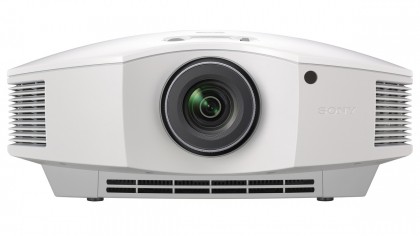
Our sample was a gloss white, but there's a black edition if that's a better fit for your theatre. It weighs 9kg (around 20lbs), so you may need to some help when bolting it to the ceiling.
Connections run down its right-hand side. There are two HDMI inputs, plus a USB port for firmware update support. There's an IR input and PC control, but no 12v trigger, which continues to be a key missing ingredient on this Sony chassis.
The projector supports Active shutter 3D, and has an integrated RF emitter able to cover around 10m, enough for most rooms.

To keep things running cool, air is sucked in from the front left and rear, and expelled out right front. To ensure the lamp runs quietly, opt for one of the Cinema Film settings. In a home cinema environment, where you'll most likely be using a loud multichannel sound system, so this won't be intrusive.
The projector is rated at 1800 lumens, which is a slight improvement over its predecessor. In a dark room, this lift is evident and welcome, however if you hope to combat ambient light you may be disappointed. I don't think even its Bright Cinema/Bright TV settings are really good enough to rival cheaper ultra-bright compacts. The VPL-HW45ES isn't a light canon.
Performance
Of course, where the VPL-HW45 really does shine is in its video performance. This is a sublime projector which makes HD sources look sensational.
There's a versatile collection of presets available, including an effective Game mode for input lag reduction. Choose from Cinema Film 1 and 2, Reference, TV, Photo, Game, Bright Cinema, Bright TV and User (this is actually the same as Reference, until you start to tweak it).
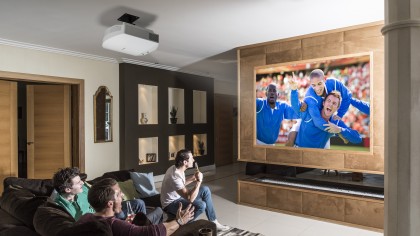
I've always been a fan of Sony's Reality Creation image processing, which manages to pull extra detail from HD content without making it look heavily processed. Similarly, a Contrast Enhancer also pulls out extra depth in the image.
There's a good deal of individual adjustment on offer too, including gamma correction and colour space adjustment, although for most content BT.709 will be the preferred default.
Motionflow technology is available to handle, well, motion resolution. Some care should be taken when tinkering here, as the settings do have a noticeable impact on picture quality. The True Cinema mode is a benign choice for movies. It doesn't affect the original frame rate, but keeps horizontal panning judder under control.
If you're watching live sports, then the Smooth Low Motionflow setting is the best option. This retains detail, but doesn't impose too many moving artefacts. Smooth High is just too heavy handed in comparison, as it adds ugly motion artefacts around certain moving objects. Combination and Impulse modes are cleaner but suffer from pronounced flicker, and are best avoided.
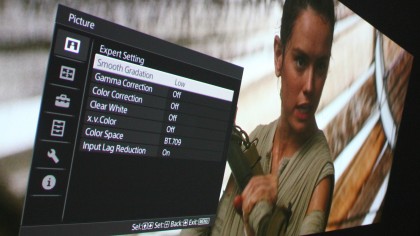
There's genuine sparkle to the image. Star Wars The Force Awakens is one of the better encoded Blu-rays out this year, and looks supreme here. The deep space sequences enjoy a convincing black level, while the brightly lit chase across the surface of desert planet Jakku, is crisp and vivid.
Shadow detail is consistently good. In Batman V Superman (Blu-ray), for example, there's plenty of depth to be found in the darkness. When Martha's pearls clatter down the drain (spoiler), you can see clearly make out texture within the grate.
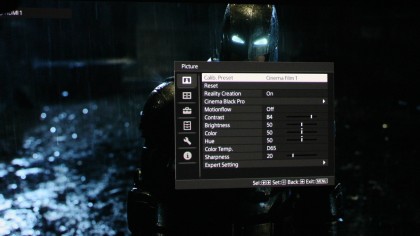
The opening slobber knocker between Supes and Zod is a riot of colourful destruction. As building fall and heatvision rays slice uncontrollably, there's an intensity to the colour palette which is wonderfully involving – and you'll certainly want to join in with the deep blue Indian Ocean dive to retrieve Kryptonite.

Steve has been writing about AV and home cinema since the dawn of time, or more accurately, since the glory days of VHS and Betamax. He has strong opinions on the latest TV technology, Hi-Fi and Blu-ray/media players, and likes nothing better than to crank up his ludicrously powerful home theatre system to binge-watch TV shows.
